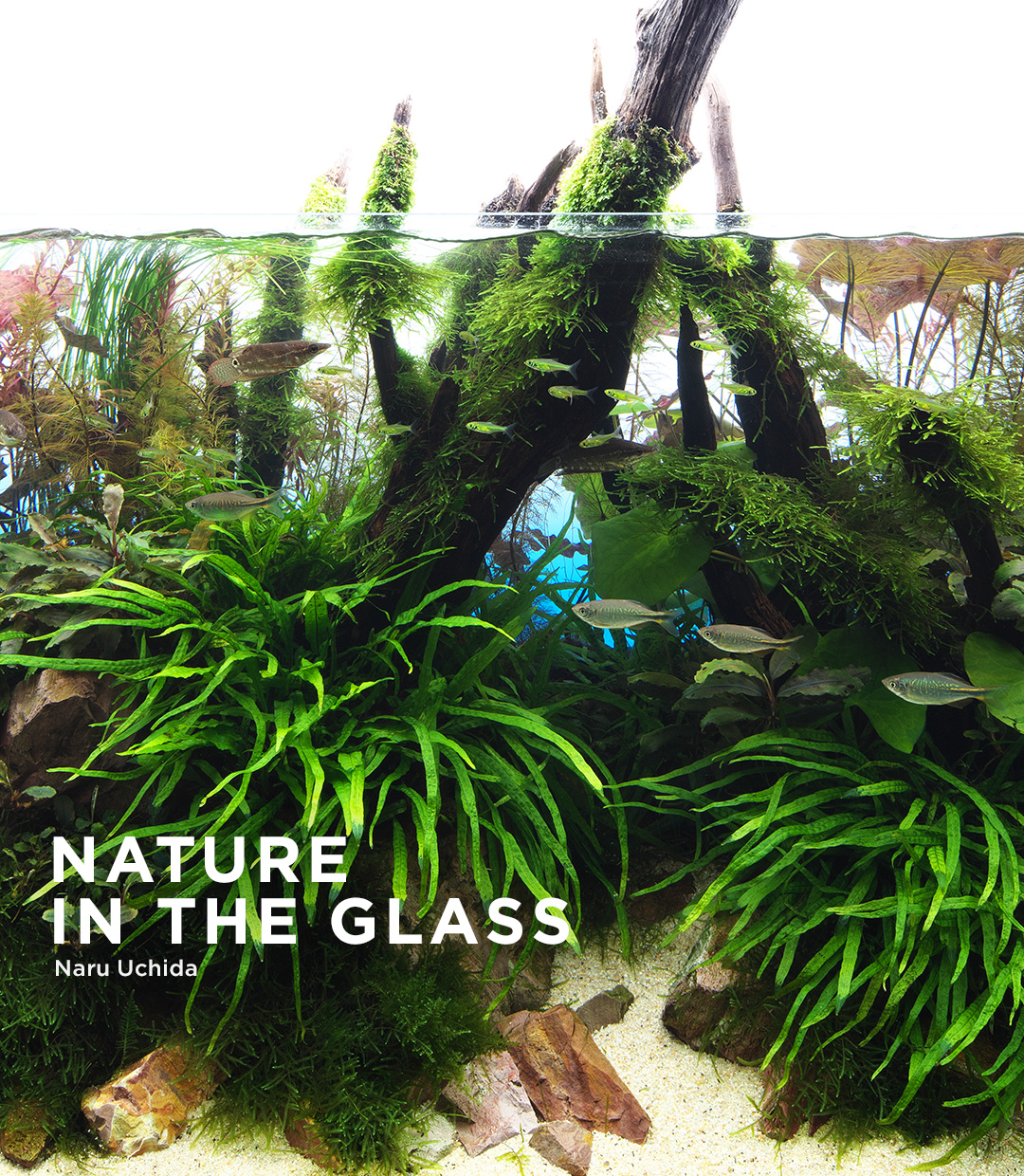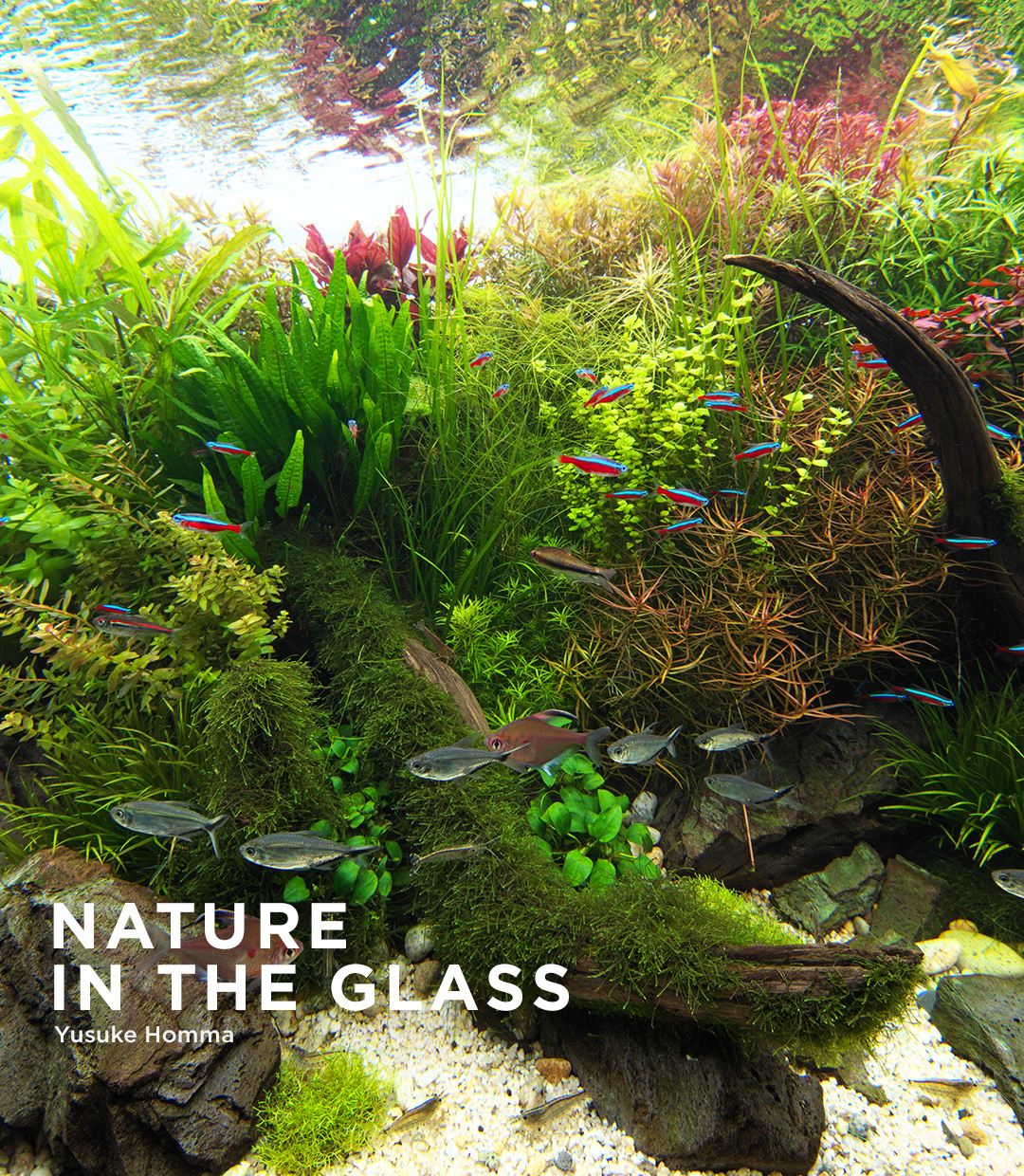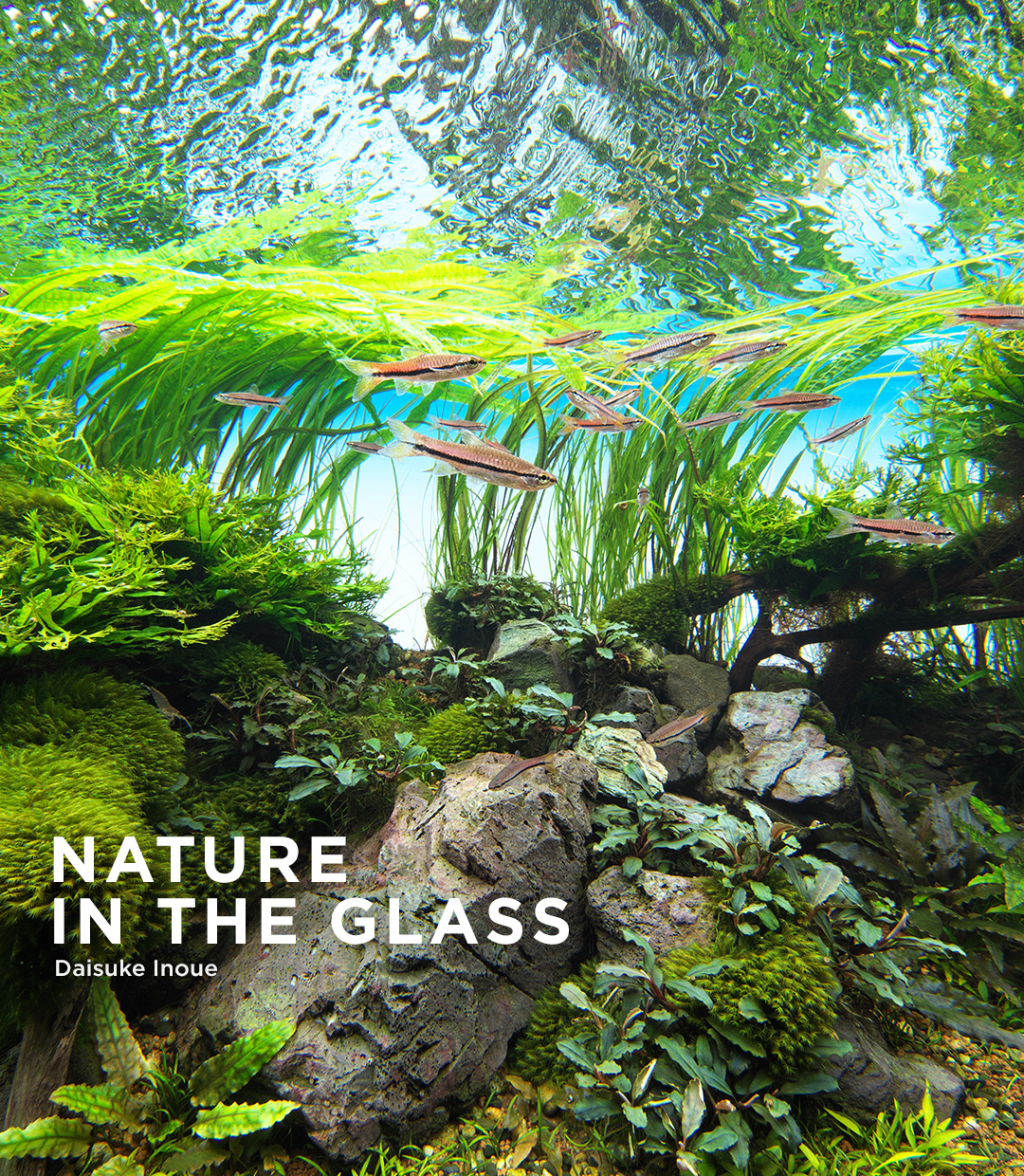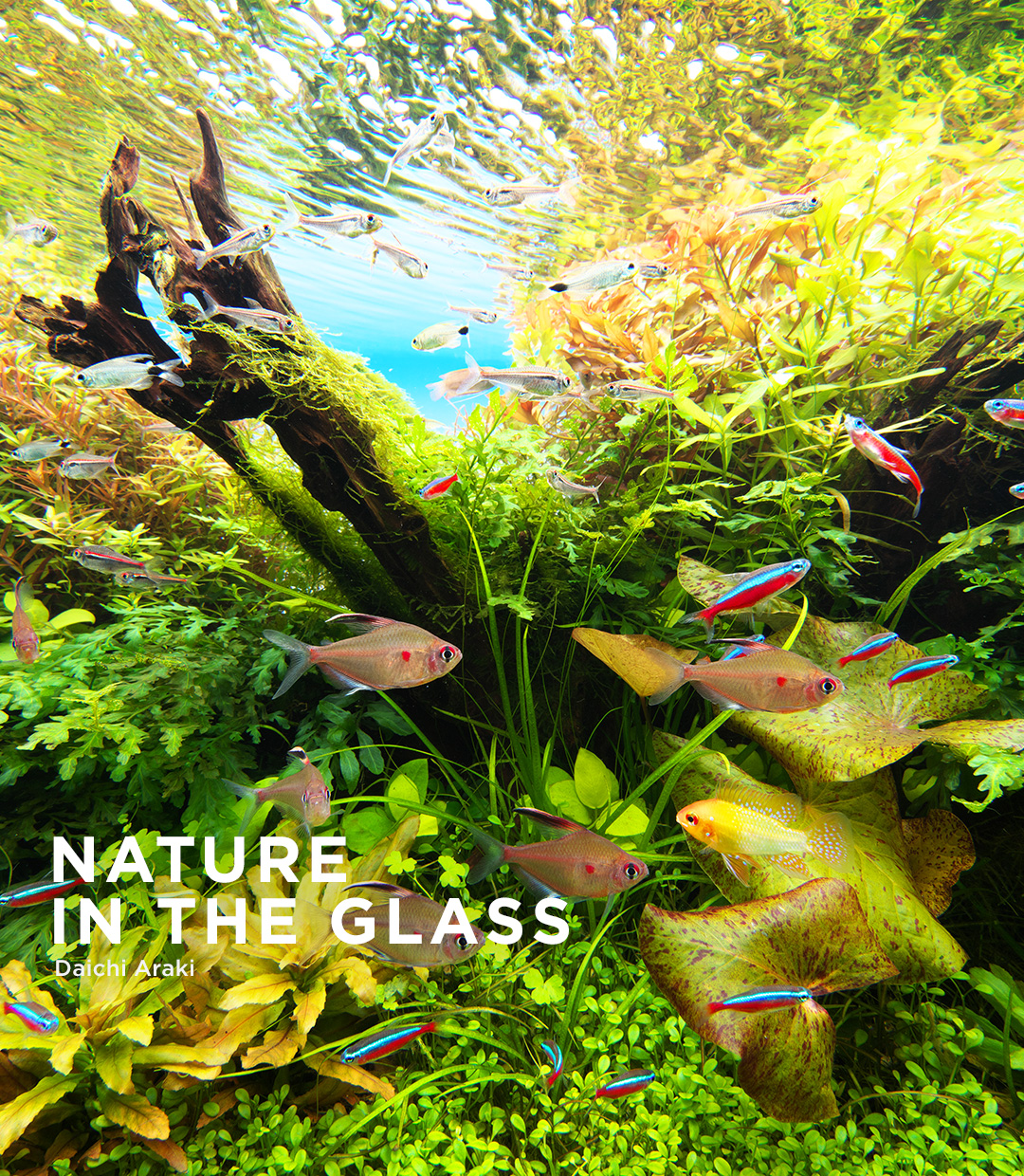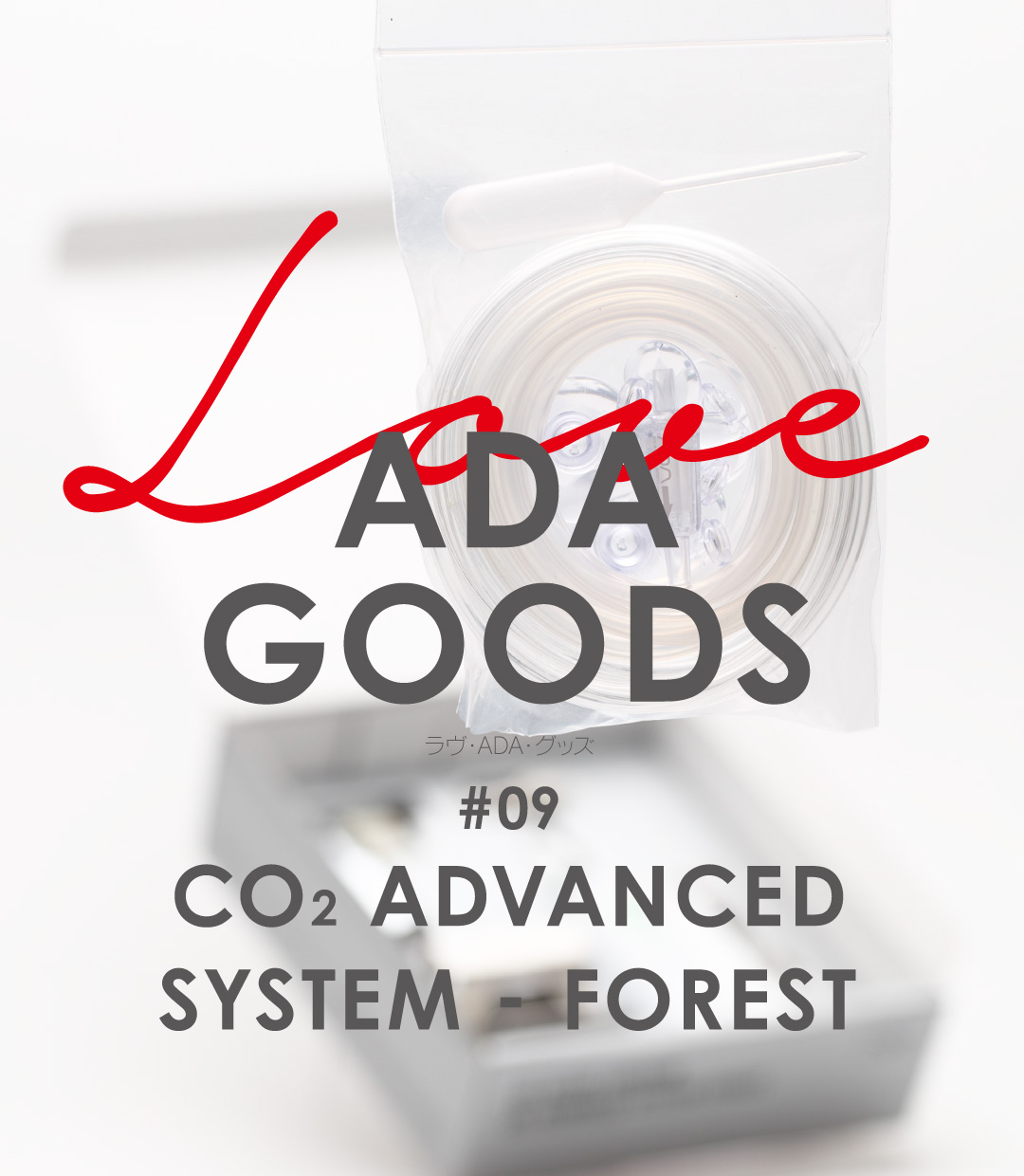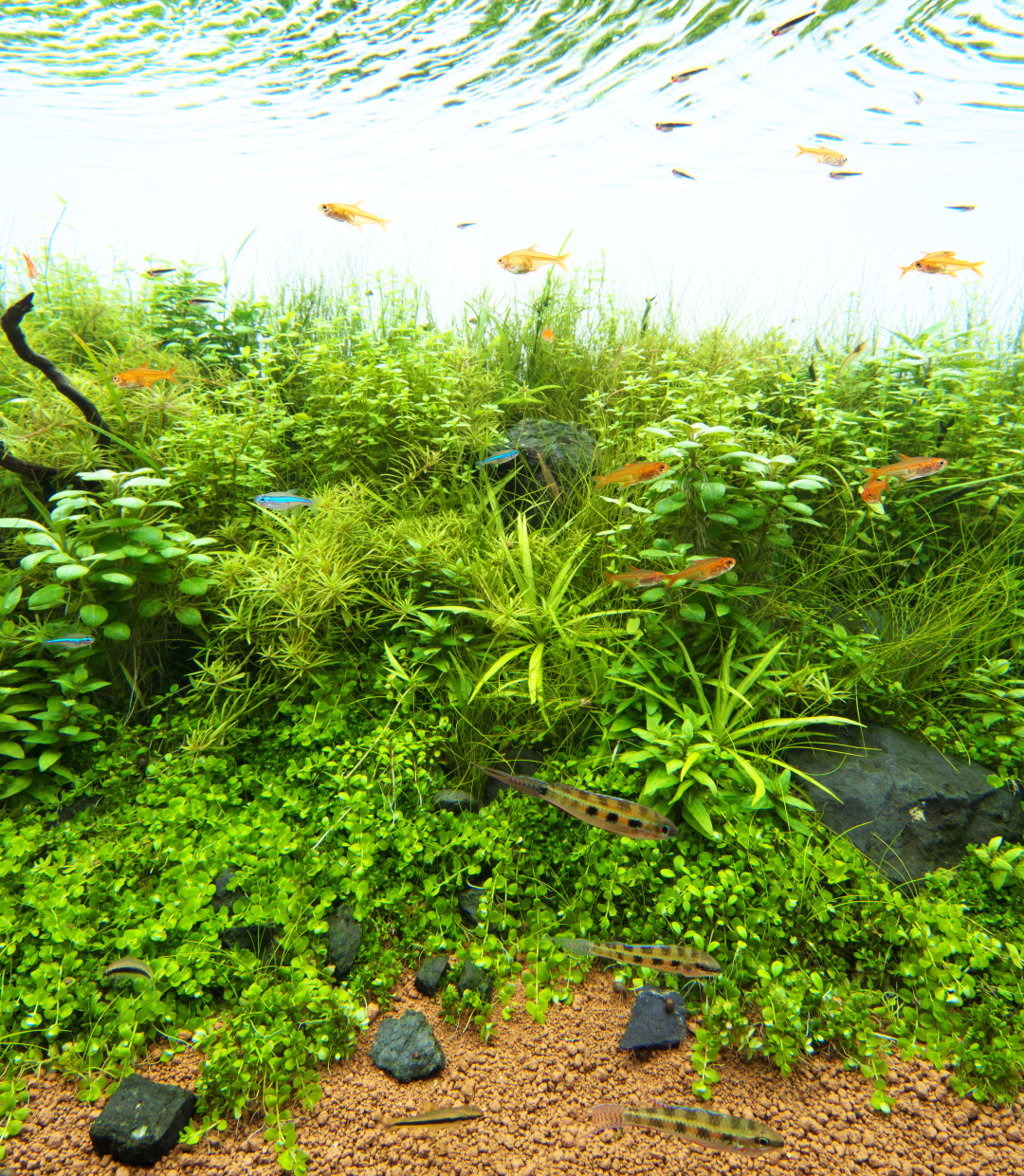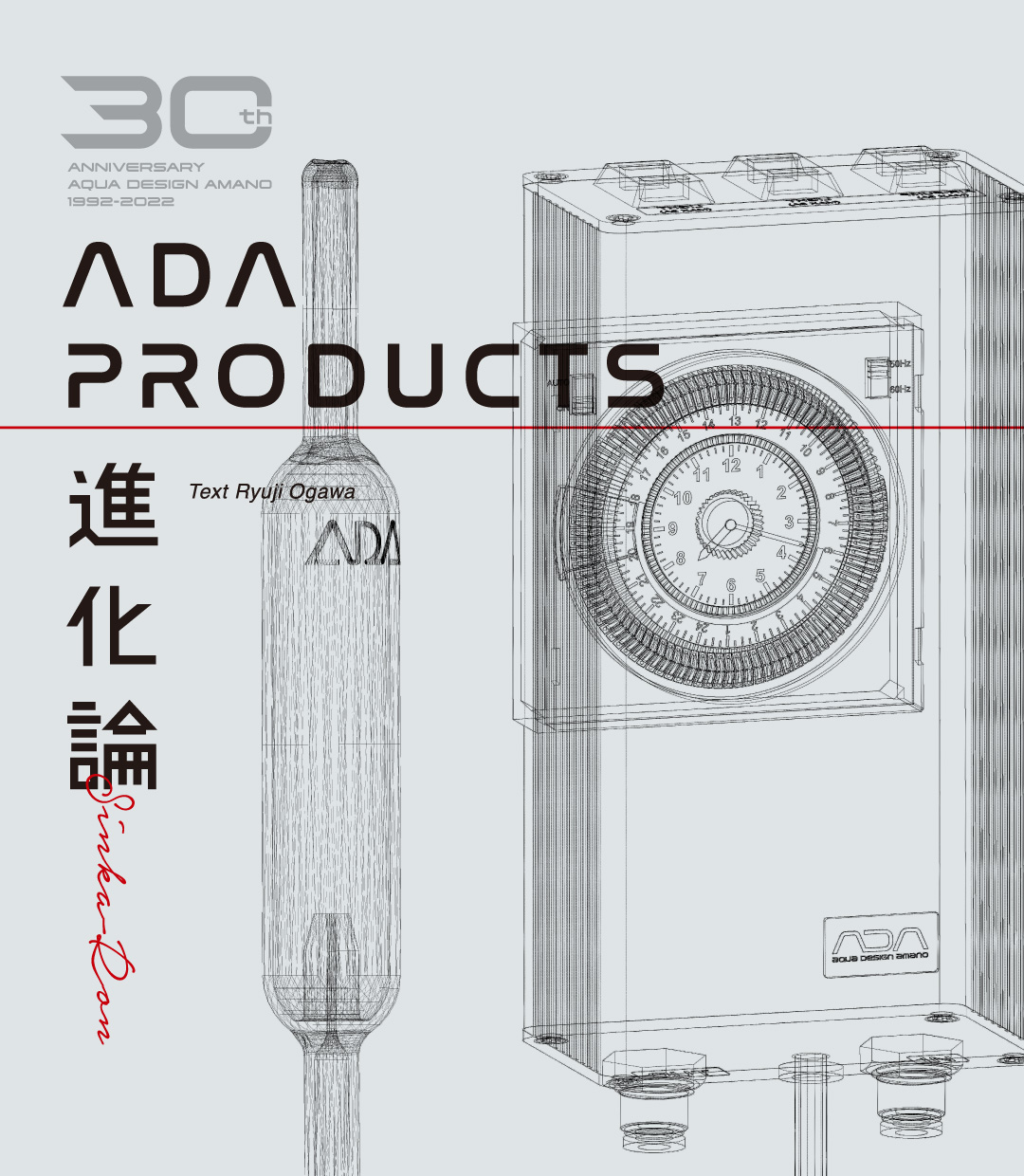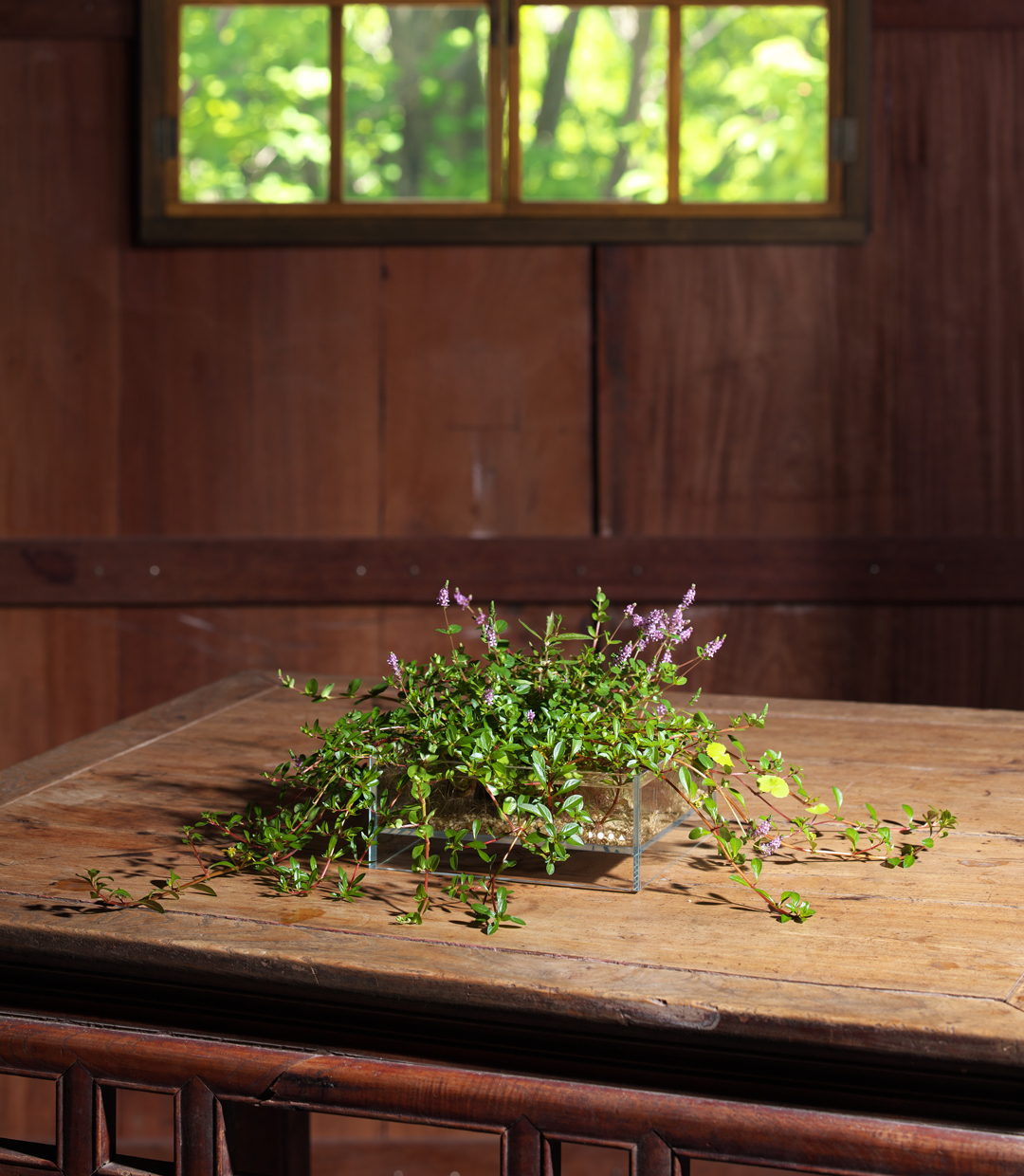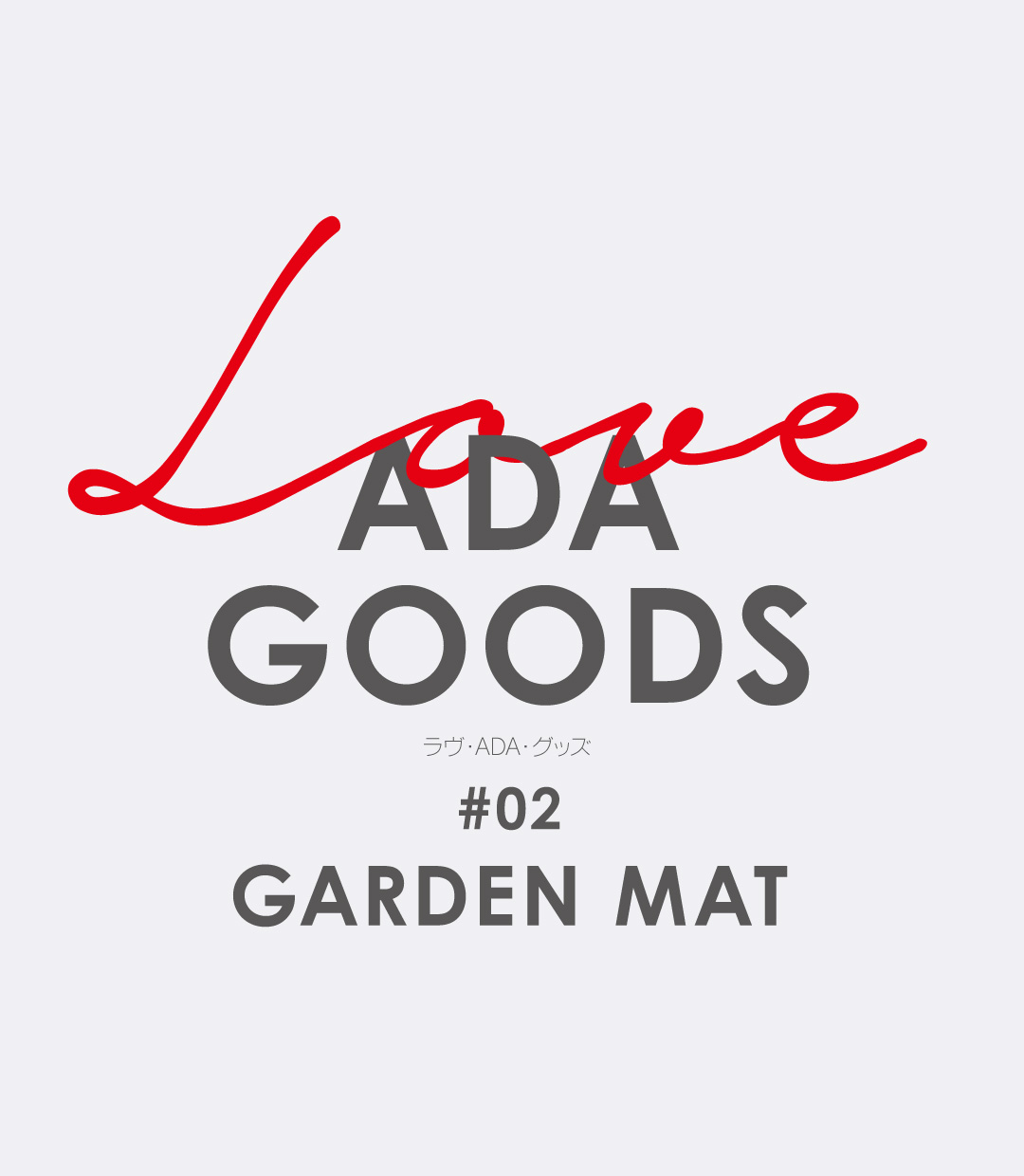NATURE IN THE GLASS “Relaxing Aquascape”
[Relaxing Aquascape]
It is instinctive for people to seek greenery, but surrendering oneself to the nature surrounding diverse organisms and experiencing the environment firsthand is a precious time that enriches the mind. In this aquascape, aquatic plants with varied foliage and growth were planted according to a precise planting plan to enhance the middle ground where individuality blends in. The aquatic plants that cover the imposing driftwood are connected to each other with a gentle continuity, creating a fantastic sense of immersion in the water, which gives the viewer a sense of healing and peace of mind.
It is instinctive for people to seek greenery, but surrendering oneself to the nature surrounding diverse organisms and experiencing the environment firsthand is a precious time that enriches the mind. In this aquascape, aquatic plants with varied foliage and growth were planted according to a precise planting plan to enhance the middle ground where individuality blends in. The aquatic plants that cover the imposing driftwood are connected to each other with a gentle continuity, creating a fantastic sense of immersion in the water, which gives the viewer a sense of healing and peace of mind.
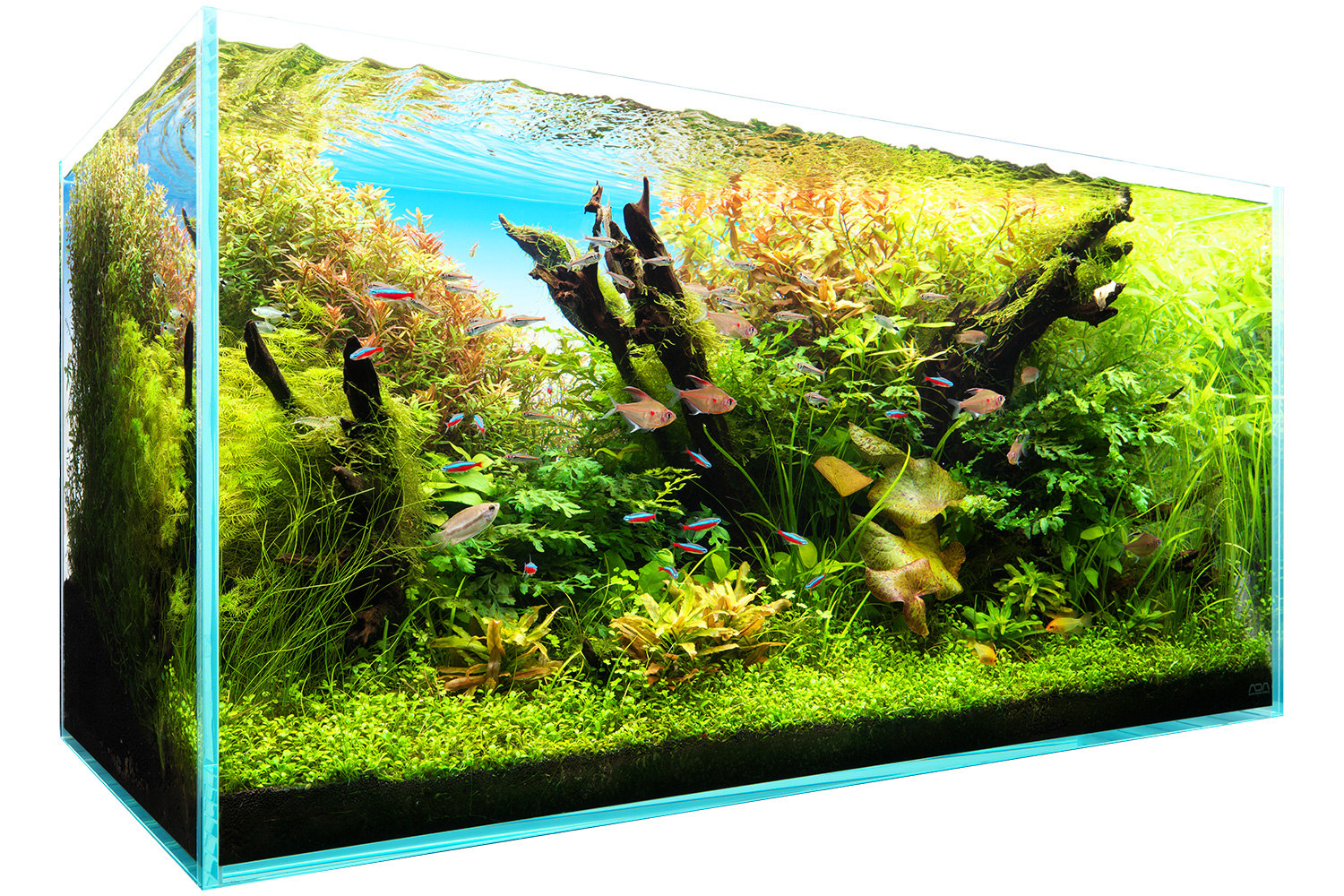
DATA
Photo taken on: October 7, 2022 (ADA)
Creator: Daichi Araki (layout production, text)
Aquarium: Cube Garden W90 x D45 x H45 (cm)
Lighting: Solar RGB x 1 (8.5 hours per day)
Filtration: Super Jet Filter ES-900 (Bio Rio G)
Materials: Horn Wood, Sansui Stone
Substrate: Aqua Soil-Amazonia, Power Sand Advance M, Bacter 100, Clear Super, Tourmaline BC
CO2: Pollen Glass Large 30Ø, 4 bubbles per second with CO2 Twist Counter (using Tower)
Aeration: 15.5 hours after the light is turned off with Lily Pipe P-4
Additives: Brighty K, Green Brighty Mineral, Green Brighty Iron, Green Brighty Nitrogen
Water change: 1/2 once a week
Water quality: Temperature 25°C, pH: 6.2, TH: 50 mg/L
Plants:
Glossostigma elatinoides (BIO)*
Hydrocotyle tripartite (BIO)*
Eleochalis acicularis (BIO)*
Helanthium tenellum (BIO)*
Helanthium tenellum ‘Madeira’
Anubias barteri var. nana
Anubias barteri var. nana ‘Petite’ (BIO)*
Anubias barteri var. nana ‘Golden’
Nymphaea sp. ‘Redsesame’
Ludwigia sphaerocarpa
Bolbitis heudelotii (Jungle Plants)*
Hygrophila polysperma
Ludwigia glandulosa
Ludwigia palustris ‘Green’
Myriophyllum matogrossense (BIO)*
Ludwigia arcuata (BIO)*
Rotala macrandra ‘Green’ (BIO)*
Rotala rotundifolia ‘Ceylon’ (BIO)*
Rotala sp. ‘Hra’ (BIO)*
Rotala rotundifolia ‘Fujian’
Taxiphyllum barbieri (Moss Bag)*
Fish and Invertebrates:
Paracheirodon axelrodi
Hyphessobrycon elachys
Hyphessobrycon amapaensis
Hyphessobrycon erythrostigma
Microgeophagus ramirezi var.
Trichogaster chuna var.
Crossocheilus siamensis
Otocinclus sp.
Caridina multidentata
Photo taken on: October 7, 2022 (ADA)
Creator: Daichi Araki (layout production, text)
Aquarium: Cube Garden W90 x D45 x H45 (cm)
Lighting: Solar RGB x 1 (8.5 hours per day)
Filtration: Super Jet Filter ES-900 (Bio Rio G)
Materials: Horn Wood, Sansui Stone
Substrate: Aqua Soil-Amazonia, Power Sand Advance M, Bacter 100, Clear Super, Tourmaline BC
CO2: Pollen Glass Large 30Ø, 4 bubbles per second with CO2 Twist Counter (using Tower)
Aeration: 15.5 hours after the light is turned off with Lily Pipe P-4
Additives: Brighty K, Green Brighty Mineral, Green Brighty Iron, Green Brighty Nitrogen
Water change: 1/2 once a week
Water quality: Temperature 25°C, pH: 6.2, TH: 50 mg/L
Plants:
Glossostigma elatinoides (BIO)*
Hydrocotyle tripartite (BIO)*
Eleochalis acicularis (BIO)*
Helanthium tenellum (BIO)*
Helanthium tenellum ‘Madeira’
Anubias barteri var. nana
Anubias barteri var. nana ‘Petite’ (BIO)*
Anubias barteri var. nana ‘Golden’
Nymphaea sp. ‘Redsesame’
Ludwigia sphaerocarpa
Bolbitis heudelotii (Jungle Plants)*
Hygrophila polysperma
Ludwigia glandulosa
Ludwigia palustris ‘Green’
Myriophyllum matogrossense (BIO)*
Ludwigia arcuata (BIO)*
Rotala macrandra ‘Green’ (BIO)*
Rotala rotundifolia ‘Ceylon’ (BIO)*
Rotala sp. ‘Hra’ (BIO)*
Rotala rotundifolia ‘Fujian’
Taxiphyllum barbieri (Moss Bag)*
Fish and Invertebrates:
Paracheirodon axelrodi
Hyphessobrycon elachys
Hyphessobrycon amapaensis
Hyphessobrycon erythrostigma
Microgeophagus ramirezi var.
Trichogaster chuna var.
Crossocheilus siamensis
Otocinclus sp.
Caridina multidentata
Exploration of the middle ground breathing life into the aquascape
It is no exaggeration to say that the foreground, which covers the bottom of the water with greenery, the background, which is an impressive group of vegetation, and the middle ground, which was created to connect the foreground and middle ground without any unnatural feelings, determine the degree of com-pleteness of the aquascape. The “dynamic middle ground”, which embodies the strength of life force, increases continuity by blurring the boundary between the three areas, while the “still middle ground”, which blends individual characteristics and evokes the diversity of vegetation, is the essence of uniqueness. The natural mixture of these three areas and the shifting vegetation over time give richness to the aquascape.
It is no exaggeration to say that the foreground, which covers the bottom of the water with greenery, the background, which is an impressive group of vegetation, and the middle ground, which was created to connect the foreground and middle ground without any unnatural feelings, determine the degree of com-pleteness of the aquascape. The “dynamic middle ground”, which embodies the strength of life force, increases continuity by blurring the boundary between the three areas, while the “still middle ground”, which blends individual characteristics and evokes the diversity of vegetation, is the essence of uniqueness. The natural mixture of these three areas and the shifting vegetation over time give richness to the aquascape.
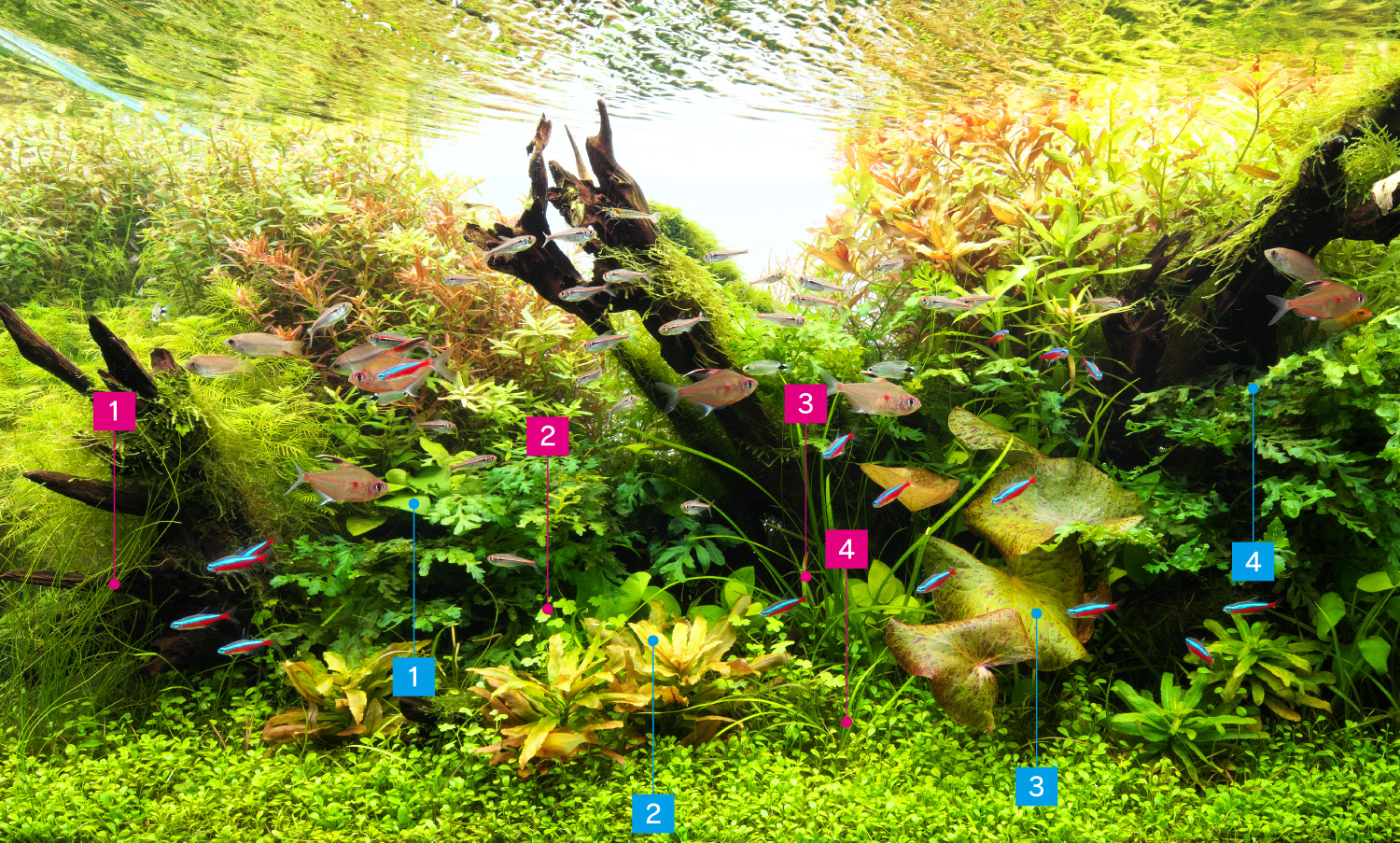
Still Middle Ground
It is a middle ground plant that takes time to grow in a place where it puts down roots and develops unique, eye-catching foliage. Careful zoning in anticipation of growth is essential to prevent characteristics from clashing.
1 Anubias barteri var. nana ‘Golden’
The light green foliage, one of the few light green leaves in the middle ground epiphytic species, highlights the shadowy base of the driftwood.
2 Ludwigia sphaerocarpa
The reddish foliage under appropriate light levels resonates with the warm colors of the Nymphaea sp. ‘Redsesame’ and stem plants, creating a cohesive overall color scheme.
3 Nymphaea sp. ‘Redsesame’
Its bulbs are placed deep in the driftwood where they are firmly rooted, and the pads are clipped off to emphasize stability.
4 Bolbitis heudelotii
Its dark green foliage that gives a sense of security acts as a balancer that governs the individuality of each aquatic plant.
Dynamic Middle Ground
This is a pioneering middle ground plant that extends runners in all directions and quickly expands its habitat. The appearance of the plant growing densely and weaving between diverse plants is indispensable for expressing the wildness.
1 Eleochalis acicularis
Its delicate fine leaves that drift in the water currents with a subtle impression soften the impression of driftwood, which tells of the harshness of nature.
2 Hydrocotyle tripartite
Its unique leaf shape mixed in with the “dynamic middle ground,” which is dominated by fine leaves, provides a subtle accent.
3 Helanthium tenellum ‘Madeira’
Although the plant grows taller, its slender leaves create an appropriate margin in the space and enhance the continuity between the middle and back ground.
4 Helanthium tenellum
The short plant height lightly connects the foreground and middle ground, and the reddish fine leaves lighten up the monotony of color.
It is a middle ground plant that takes time to grow in a place where it puts down roots and develops unique, eye-catching foliage. Careful zoning in anticipation of growth is essential to prevent characteristics from clashing.
1 Anubias barteri var. nana ‘Golden’
The light green foliage, one of the few light green leaves in the middle ground epiphytic species, highlights the shadowy base of the driftwood.
2 Ludwigia sphaerocarpa
The reddish foliage under appropriate light levels resonates with the warm colors of the Nymphaea sp. ‘Redsesame’ and stem plants, creating a cohesive overall color scheme.
3 Nymphaea sp. ‘Redsesame’
Its bulbs are placed deep in the driftwood where they are firmly rooted, and the pads are clipped off to emphasize stability.
4 Bolbitis heudelotii
Its dark green foliage that gives a sense of security acts as a balancer that governs the individuality of each aquatic plant.
Dynamic Middle Ground
This is a pioneering middle ground plant that extends runners in all directions and quickly expands its habitat. The appearance of the plant growing densely and weaving between diverse plants is indispensable for expressing the wildness.
1 Eleochalis acicularis
Its delicate fine leaves that drift in the water currents with a subtle impression soften the impression of driftwood, which tells of the harshness of nature.
2 Hydrocotyle tripartite
Its unique leaf shape mixed in with the “dynamic middle ground,” which is dominated by fine leaves, provides a subtle accent.
3 Helanthium tenellum ‘Madeira’
Although the plant grows taller, its slender leaves create an appropriate margin in the space and enhance the continuity between the middle and back ground.
4 Helanthium tenellum
The short plant height lightly connects the foreground and middle ground, and the reddish fine leaves lighten up the monotony of color.
![[ STYLE OF EPIPHYTIC PLANTS ] Effective use of epiphytic aquatic plants in layout scenes](https://www.adana.co.jp/wp-content/uploads/sites/3/2024/04/ep_img_ogp.jpg)
